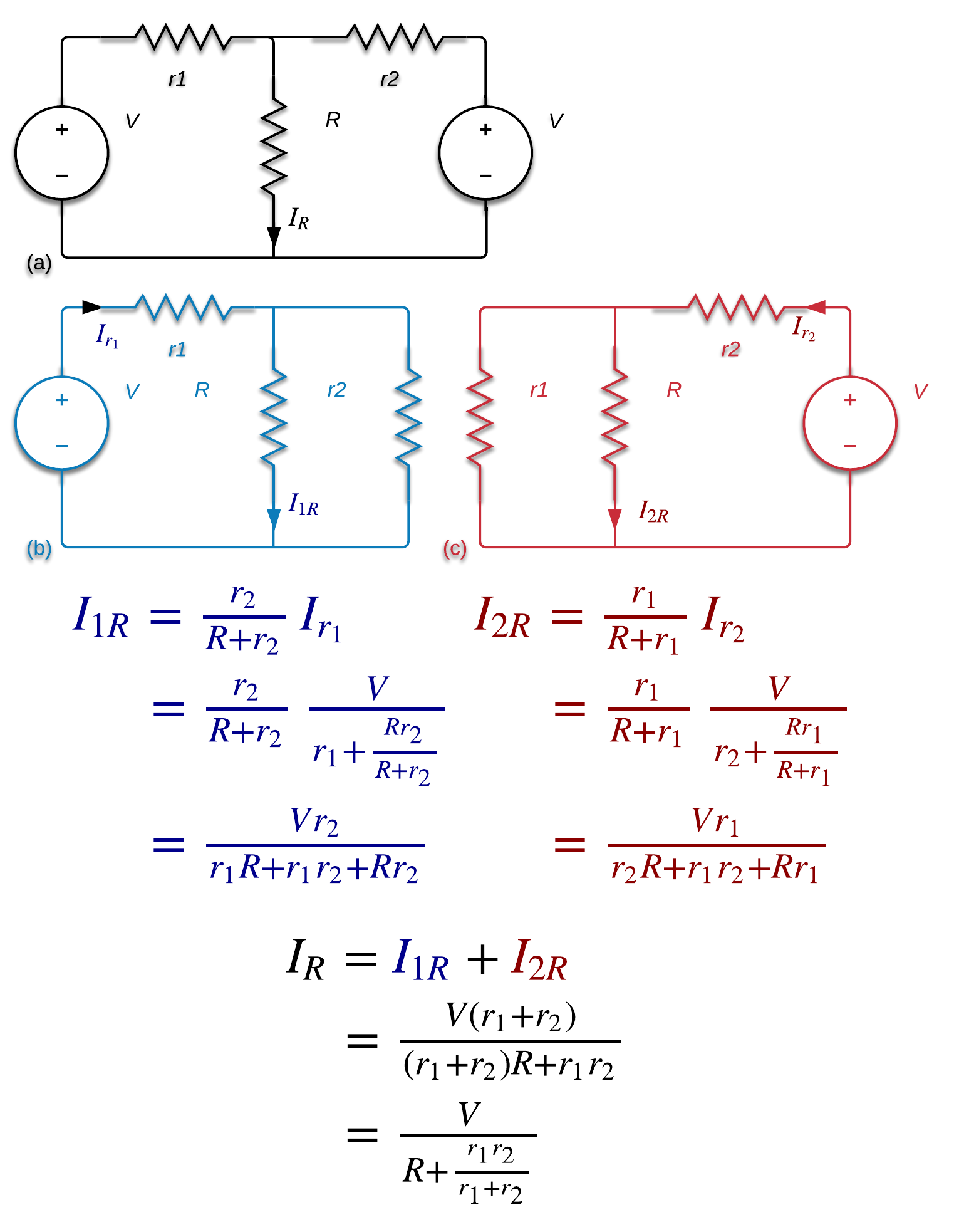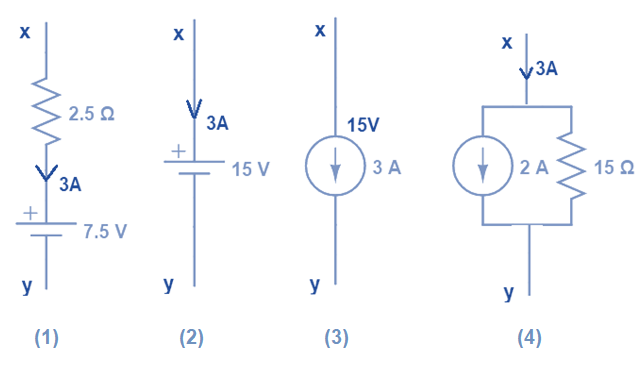Superposition Theorem
In any linear circuit with multiple independent sources, the voltage or current for any element in the circuit is the algebraic sum of the voltages or currents caused by each independent source acting alone, while all other independent sources are turned off (replaced by their internal impedances).

Key Points
• For voltage sources, turning off means replacing them with a short circuit (since an ideal voltage source has zero internal resistance). • For current sources, turning off means replacing them with an open circuit (since an ideal current source has infinite internal resistance).
Substitution Theorem
Any branch in a network can be replaced by a different branch without disturbing the voltages and currents in the rest of the network, provided that the new branch has the same terminal voltage and current as the original branch
For example, the following four branches can replace each other in the same circuit
 The application of this theorem is that, if we have some known constructions on the current, voltage of some certain branches or parts in the circuit and we just need to analyze the circuits part outside them, then we could just simplify these parts with some simple sources and resistances.
The application of this theorem is that, if we have some known constructions on the current, voltage of some certain branches or parts in the circuit and we just need to analyze the circuits part outside them, then we could just simplify these parts with some simple sources and resistances.
Thevenin's Theorem
Any linear circuit containing voltage or current sources and resistors can be replaced by an equivalent circuit consisting of:
- A voltage source ()
- A series resistance () The Thevenin equivalent circuit behaves identically to the original circuit from the perspective of the load
To get , we can short all voltage sources and disconnect all current sources.
Application
- Simplify the circuit, see Equivalent Transformation of Power Sources for specific tricks
- By viewing the whole circuit in Thevenin's perspective, we can just use two variables to represent it.
Norton's Theorem
Any linear circuit can be replaced by an equivalent circuit consisting of:
- A current source ()
- A parallel resistance () The Norton equivalent circuit also behaves identically to the original circuit from the load's perspective
Maximum Power Transfer Theorem
Maximum power is transferred from a source to a load when the load resistance is equal to the source resistance, that is
where is the load resistance, and is the source resistance.
In AC case, the condition can be expressed as
for Thevenin equivalence, and
for Norton equivalence.